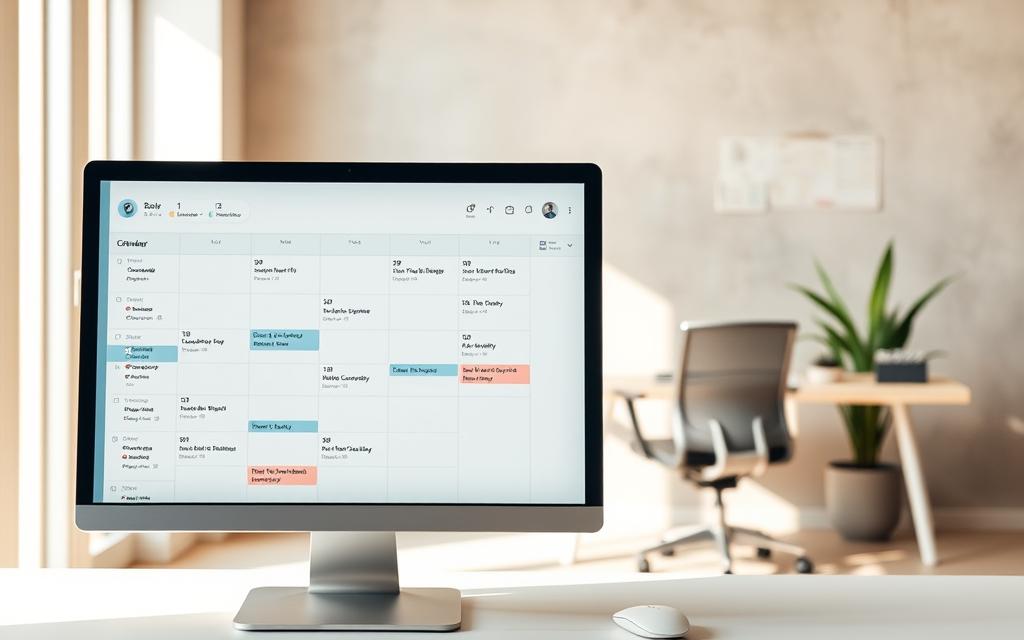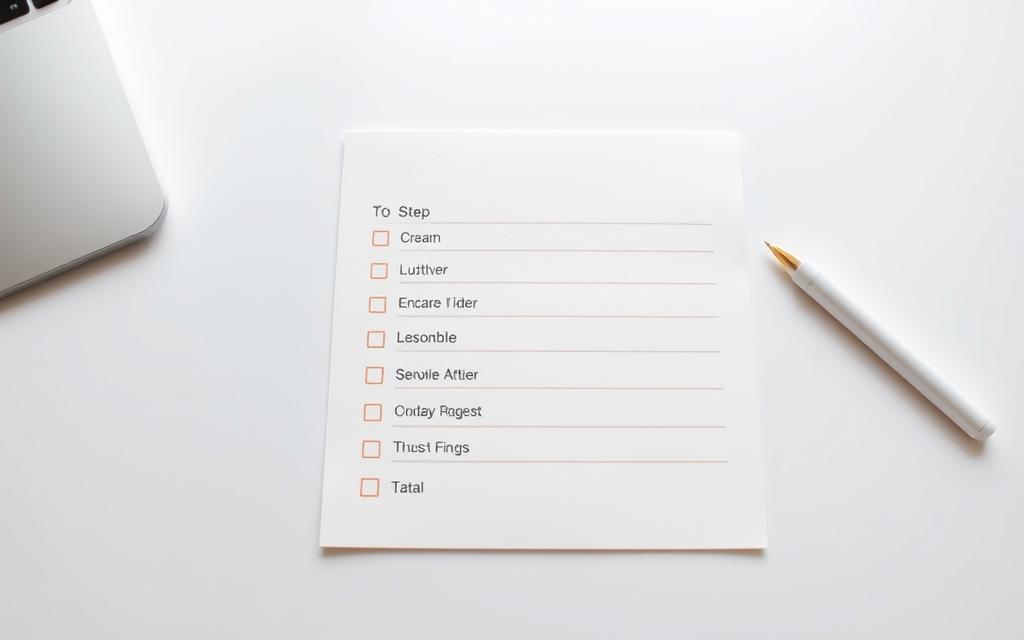Juggling classes, deadlines, and social plans can feel like a never-ending race. Between back-to-back lectures, group projects, and part-time jobs, it’s easy to lose track of priorities. But what if small changes could transform chaos into calm?
Effective time management isn’t about rigid schedules—it’s about working smarter. Simple strategies like blocking focused work periods or using digital reminders help reclaim control of your day. College students and professionals alike benefit from these adaptable methods, whether tackling assignments or balancing personal commitments.
Clear organization reduces stress and creates space for what matters. For example, Arizona State University’s student success team shares easy ways to stay organized, like breaking tasks into manageable steps. Tiny tweaks, like dedicating 10 minutes daily to decluttering, often yield big results in work efficiency.
Ready to streamline your routine? This guide offers practical steps to prioritize tasks, optimize energy, and keep things moving smoothly—no perfection required. Let’s turn overwhelm into momentum.
The Importance of a Clear Organizational Strategy
Ever feel like your brain has too many tabs open? A solid plan cuts through the noise. Think of organization as your personal GPS—it guides decisions, saves time, and keeps priorities in view.

Why Structure Matters
Clutter isn’t just physical. Mental chaos drains focus and fuels stress. Studies show that structured systems—like a prioritized task list—free up mental space. Students who plan their week in advance report 30% less anxiety during exams.
From Chaos to Control
Take Sarah, a nursing student. She switched from sticky notes to a digital priority list. Suddenly, clinical rotations and study sessions flowed smoothly. Small tweaks, like color-coding tasks, became the thing that transformed her routine.
This way of thinking applies everywhere. At work, organized teams hit deadlines faster. At home, meal planning saves hours. Even a five-minute daily review of your schedule strengthens your approach to life.
Remember: Organization isn’t about perfection. It’s about creating systems that bend without breaking—so you can thrive in every part of your life.
Effective Calendar and Scheduling Techniques
Balancing responsibilities can feel like spinning plates. A well-structured calendar acts like glue—keeping commitments from crashing down. Whether managing part-time shifts or group projects, clarity starts with intentional planning.

Leveraging Digital Calendars for Better Time Management
Digital tools turn chaos into order. Sync your to-do list with calendar alerts to make sure nothing slips through. For example, blocking 25-minute study times between classes creates rhythm without burnout.
Color-code tasks: blue for work, green for school. Apps like Google Calendar send reminders 10 minutes before meetings. Store notes in labeled folders within your device—no more frantic searches for that essay draft.
Balancing Work, School, and Social Life
Boundaries prevent overlap. Schedule times for relaxation just as you would deadlines. A student-athlete might block 6–7 PM for gym sessions, ensuring they end day energized, not exhausted.
Try these steps:
- Update your to-do list each morning
- Review folders weekly to archive old files
- Sync calendars with friends to plan hangouts hassle-free
Make sure every appointment has a purpose. When Friday hits, you’ll end day knowing next week’s priorities are locked in.
Practical Tools to Enhance Your Organization at Work and School
Think of your daily routine as an operating system—without the right tools, everything freezes. Physical organizers and digital solutions work together to create frictionless workflows.
Using Folders, Apps, and To-Do Lists Effectively
A clear task list acts like a compass during hectic weeks. Break projects into daily steps: “Read chapter 4” beats “Study biology.” Apps like Todoist let you assign deadlines and sync with your calendar.
Try this approach:
- Color-code physical folders for classes or clients
- Set app reminders two days before deadlines
- Review organization strategies weekly to adjust priorities
Organizers and Digital Note-Taking for Efficiency
Lost handouts vanish with systems like Evernote. Snap photos of whiteboards, tag notes by topic, and search keywords later. One student stored exam papers in labeled cloud folders—no more last-minute panics.
Digital tools shine for collaboration. Share Google Docs with study groups or track team tasks via Trello boards. Sync everything across devices so your plan stays intact whether you’re at the library or coffee shop.
Pro tip: Spend 5 minutes nightly sorting digital files. A marketing student reduced project prep time by 40% this way. Small habits keep your entire week flowing smoothly.
Simple Productivity Hacks for Daily Efficiency
Mornings set the rhythm for everything that follows. A calm start and smart preparation create momentum that lasts all day. These tips fit seamlessly into busy schedules—no overhauls required.

Morning Meditation and Setting the Tone for Your Day
Five minutes of quiet breathing works wonders. Research shows morning meditation reduces decision fatigue by 22%. Try apps like Headspace for guided sessions while sipping coffee.
Designate a place for your routine—a cozy chair or balcony corner. One teacher starts her day with lavender tea and a gratitude list. Her students notice she’s more focused during lessons.
Prepping the Night Before to Stay on Top of Tasks
A paper checklist beats midnight panic. Lay out clothes, pack lunches, and review tomorrow’s top three goals. This hack saved a freelance writer 90 minutes weekly.
Store projects in labeled bins or digital folders. A graphic designer keeps client files in color-coded trays. “Everything has its place,” she says. “No more scrambling before meetings.”
- Set reminders to charge devices overnight
- Write tomorrow’s priority task on a sticky note
- Keep keys/wallet in a designated bowl by the door
How to Stay Organized: Practical Steps and Best Practices
Mastering daily tasks starts with systems that adapt to your rhythm. Whether prepping for finals or managing client projects, small adjustments create lasting momentum. Let’s explore methods that help people maintain clarity without overhauling their entire routine.
Crafting an Effective To-Do List and Schedule
Begin by writing three critical steps each morning. Rank them by urgency—biology exam prep trumps laundry day. Apps like Todoist let you assign deadlines and track progress with color-coded labels. Sync these with calendar alerts to avoid missed meetings.

Break large assignments into 30-minute chunks. A marketing intern used this schedule hack to finish reports two days early. Weekly reviews help spot bottlenecks—move low-priority tasks to Friday slots if Wednesday overflows.
Creating a Functional Workspace for Focus
A clutter-free desk sharpens concentration. Research shows workers in tidy spaces complete steps 18% faster. Store supplies in labeled drawers and keep only current projects visible. One professor keeps a “distraction bin” for phones during grading marathons.
Digital tools like Notion act as apps-based assistants. Track deadlines, store reference files, and set recurring reminders for routine checks. Students using these methods report feeling more in control during crunch weeks.
Pro tip: Use noise-canceling headphones in shared spaces. A freelance designer credits this move for hitting client track records consistently. Little changes add up—your future self will thank you.
Time Management Techniques for Success
Ever wish days had more hours? Smart time strategies turn chaotic schedules into manageable chunks. By aligning tasks with energy levels and using proven methods, you’ll tackle deadlines without burnout.

Master Time Blocking for Focused Work
Assign specific parts of your day to priorities. A marketing manager might block 9–11 AM for client meetings, leaving afternoons for creative projects. Studies show this approach cuts stress by 30% compared to reactive multitasking.
Try these steps:
- Color-code calendar slots for work, study, and breaks
- Protect 90-minute deep work sessions from interruptions
- Review dates weekly to adjust blocks as needed
Harness the Pomodoro Technique
Work in 25-minute sprints followed by 5-minute breaks. This rhythm keeps your brain fresh while tackling items like essay drafts or spreadsheets. One developer completed coding tasks 40% faster using this method.
Four Pomodoro cycles? Take a 20-minute walk. Physical activity resets focus—perfect before tackling afternoon meetings. Apps like Focus Keeper track sessions automatically, so you stay on track without clock-watching.
Both methods reduce stress by creating clear boundaries. A nursing student reported better sleep after time-blocking clinical rotations and study dates. Remember: Flexibility matters. Shift blocks if urgent items arise—the goal is progress, not perfection.
Decluttering Your Physical and Digital Spaces
Visual noise from piled papers and crowded screens drains mental bandwidth faster than you think. A clean environment sharpens focus—whether tackling chemistry homework or client reports. Start small: dedicate five minutes daily to resetting your space.

Tips for Organizing Your Desk and Files
Keep only essentials on your desk. Store textbooks in labeled bins and use drawer dividers for supplies. At school, one student reduced late assignments by 60% after designating spots for notebooks and chargers.
End paper chaos with a simple routine: File documents immediately after use. Recycle outdated notes every Friday. This habit prevents clutter from stacking up over days.
For computer files, create folders named by subject or project type. Color-code them in your operating system. A graphic designer swears by her “Active Projects” and “Reference” folders—she locates files 70% faster now.
- Delete unused apps weekly
- Back up files every Sunday
- Use the digital declutter checklist monthly
Consistency matters more than perfection. A teacher spends 10 minutes nightly wiping surfaces and closing browser tabs. Her mornings now begin calmly—proof that small routine tweaks end overwhelm.
Automating and Streamlining Your Workflow
Imagine your workflow running like a well-oiled machine—tasks completing themselves while you focus on big-picture goals. Automation tools handle repetitive actions, from sorting emails to updating project boards. This isn’t sci-fi; it’s how modern productivity thrives.
Using Automation Tools to Reduce Manual Tasks
Workflow automation cuts through busywork. Apps like Zapier link your desk tools—transfer data from forms to spreadsheets automatically. No more copying details manually. Trello boards update when team members complete steps, helping everyone keep track without constant check-ins.
Set reminders that sync across devices. Google Calendar nudges you 15 minutes before meetings, while Todoist pushes deadline alerts. These cues ensure you never miss critical get done moments. A freelance writer saved 5 hours weekly by automating invoice reminders.
Start simple:
- Use IFTTT to back up photos to cloud storage nightly
- Create email filters that sort messages into labeled folders
- Sync Slack with your calendar for instant meeting updates
Automation shines in shared spaces too. Teachers use Calendly to schedule parent conferences without back-and-forth emails. A clean desk stays clutter-free when tools handle the grunt work. Less time on admin means more energy for creative breakthroughs.
Conclusion
Finding your rhythm in a busy world starts with intentional choices. By aligning due dates with your energy levels and breaking projects into steps, you create space for progress. Tools like digital calendars and priority lists help get organized without overhauling your entire routine.
Consistency matters most. Tracking important tasks through weekly reviews ensures nothing slips through the cracks. This approach also allows flexibility—shift deadlines when unexpected challenges arise, but always keep core goals in sight.
Adopting these strategies helps you stay top of commitments while reducing mental clutter. Whether managing coursework or client projects, clear systems turn chaos into confidence. Celebrate small wins, like hitting a due date early or decluttering your workspace—they add up.
Ready to transform overwhelm into momentum? Start with one change this week. Track your progress, adjust as needed, and watch how simplicity fuels success. Your future self will thank you.
